Published in 2016 by Enslow Publishing, LLC
101 W. 23rd Street, Suite 240, New York, NY 10011
Copyright 2016 by Robert Gardner
All rights reserved.
No part of this book may be reproduced by any means without the written permission of the publisher.
Cataloging-in-Publication Data
Gardner, Robert.
Sound experiments in your own music lab / by Robert Gardner.
p. cm. (Design, build, experiment)
Includes bibliographical references and index.
ISBN 978-0-7660-6960-2 (library binding)
1. SoundExperimentsJuvenile literature. 2. Science projectsJuvenile literature. I. Gardner, Robert, 1929 . II. Title. QC225.5 G36 2016
534.078d23
Printed in the United States of America
To Our Readers: We have done our best to make sure all Web site addresses in this book were active and appropriate when we went to press. However, the author and the publisher have no control over and assume no liability for the material available on those Web sites or on any Web sites they may link to. Any comments or suggestions can be sent by e-mail to .
Portions of this book originally appeared in the book Sound Projects With a Music Lab You Can Build.
Illustration Credits: Jonathan Moreno; pialhovik/iStock/Thinkstock (graph paper background throughout book).
Photo Credits: Enslow Publishing, LLC
Cover Credits: ArtFamily/Shutterstock.com (teenager); VikaSuh/Shutterstock.com (music notes background).
Contents
Introduction
Science Fairs
The Scientific Method
Safety First
Chapter 1.The Science of Sound
 1.1Sounds and Vibrations
1.1Sounds and Vibrations
1.2Vibrating Air
1.3Frequency, Sound, and Pitch
 1.4How Does Sound Travel?
1.4How Does Sound Travel?
1.5An Aid for Hearing
 1.6Solids, Liquids, and Sound
1.6Solids, Liquids, and Sound
Chapter 2.Science and Music
2.1Strings and Science
2.2Harmonics and Waves
 2.3Waves, Octaves, and Math
2.3Waves, Octaves, and Math
 2.4Strings and Sound
2.4Strings and Sound
 2.5Air in Woodwinds and Brass Instruments.
2.5Air in Woodwinds and Brass Instruments.
 2.6Vibration and Resonance
2.6Vibration and Resonance
 2.7Resonance with Tubes of Air
2.7Resonance with Tubes of Air
Chapter 3.Instruments with Strings
 3.1Mute on a Stringed Instrument
3.1Mute on a Stringed Instrument
3.2The Purpose of a Hollow Box Under the Strings .
3.3A Piano with Wooden Keys
 3.4An Eight-Key Piano
3.4An Eight-Key Piano
3.5A Guitar with One String
3.6A Bottle Banjo
3.7A Harp with Eight Strings
3.8Making a Bass
3.9A Guitar from a Shoe Box
Chapter 4.Wind Instruments
4.1A Horn from a Hose
4.2Frequency and a Pipe Organ
4.3Flute and Pitch
4.4Bottles and Pitch
 4.5Ancient Wind Instrument
4.5Ancient Wind Instrument
 4.6Reed Instruments
4.6Reed Instruments
Chapter 5.Percussion Instruments
 5.1The Xylophone
5.1The Xylophone
 5.2Bells from Drinking Glasses
5.2Bells from Drinking Glasses
5.3Pitch and Glass Bottle Bells
5.4 Steel Wrench Chimes
5.5 Flowerpot Bells
 5.6More Chimes
5.6More Chimes
 5.7Percussion Instruments
5.7Percussion Instruments
Appendix: Science Supply Companies
Further Reading
Web Sites
Index
Introduction
Be still and quiet for a moment. Listen to the different sounds you hear. Do you hear traffic, horns, music, voices, telephones, engines, electronic humming?
Nature is full of music and rhythmthe songs that birds and whales sing, the hoofbeats of a galloping horse, waves breaking on a beach, a babbling brook, rumbling thunder, wind whistling through trees, croaking frogs, and chirping crickets.
There are noisesand there is music. People can both speak and sing. The sounds of speech and music come from our vocal cords, but they are very different.
Some anthropologists believe that our human ancestors hummed, danced, and played music before they talked. We know for certain that early humans made music because flutes made of bird bones have been found at sites known to be at least 36,000 years old. We know, too, that the early ancestors of humans, a species known as Australopithecus afarensis, were walking on two feet at least 3 million years ago. Were they dancing to the rhythm of beating drums? We dont know, but music, dance, and rhythm are so much a part of human behavior that it seems likely.
In this book, you will learn how to build a variety of different simple musical instruments. You will also do a number of experiments related to sound and music. The experiments will provide a basis for understanding the science that applies to musical instruments.
Unlike other books in this series, we will not begin by building something. Instead, we will start by learning some of the science needed to understand how musical instruments work.
Many of the things required to build the instruments and do the experiments can be found in your home. You may have to shop for some of the others. You can find them in a supermarket; a sports, hobby, or toy shop; a hardware store; a plant nursery; or one of the science supply houses listed in the appendix.
At times, you may need one or more people to help you. It would be best if you work with friends or adults who enjoy experimenting as much as you do. In that way, you will all enjoy what you are doing. If any danger is involved in doing an experiment, it will be made known to you. In some cases, to avoid any danger, you will be asked to work with an adult. Please do so. We dont want you to take any chances that could lead to an injury.
Like any good scientist, you will find it useful to record ideas, notes, data, and anything you can conclude from your experiments in a notebook. As you do this, you can keep track of the information you gather and the conclusions you reach. The notebook will allow you to refer to experiments you have done in the past and help you in doing future projects.
SCIENCE FAIRS
Some of the experiments in this book contain ideas you might use for a science fair. Those projects are indicated with a  symbol. However, judges at science fairs do not reward projects or experiments that are simply copied from a book. For example, a diagram of a sound wave would not impress most judges. Instead, an experiment that shows the mathematical relationship of tension, length, and thickness of a wire to the frequency at which it vibrates would be more likely to attract their attention.
symbol. However, judges at science fairs do not reward projects or experiments that are simply copied from a book. For example, a diagram of a sound wave would not impress most judges. Instead, an experiment that shows the mathematical relationship of tension, length, and thickness of a wire to the frequency at which it vibrates would be more likely to attract their attention.




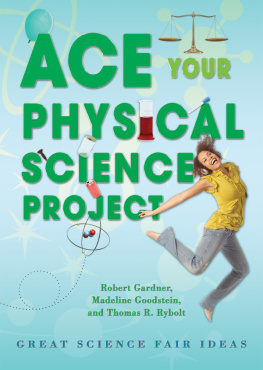


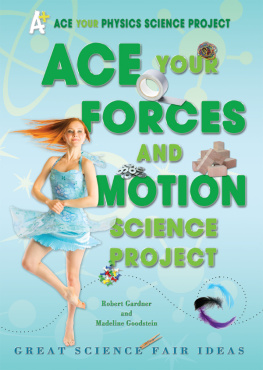
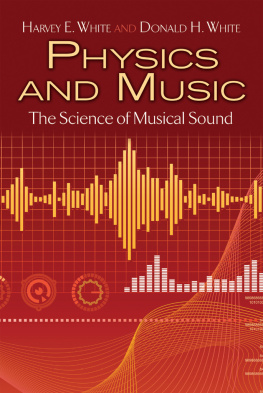
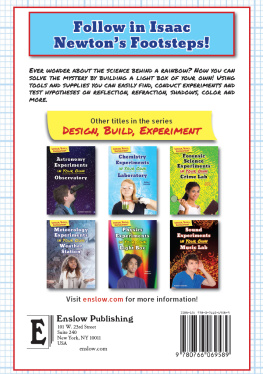
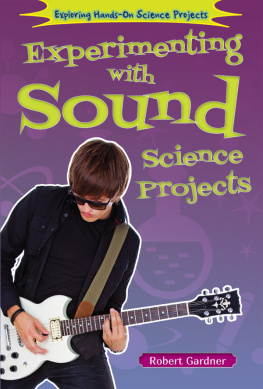
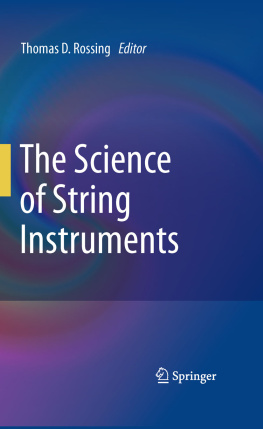
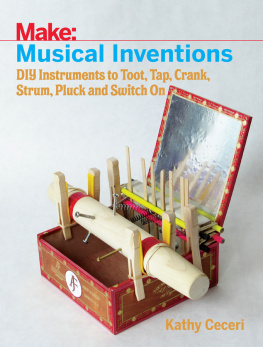
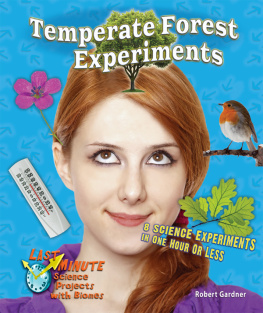

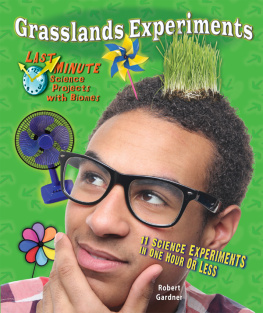





 1.1Sounds and Vibrations
1.1Sounds and Vibrations